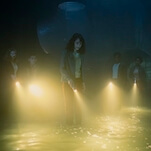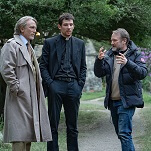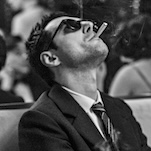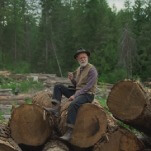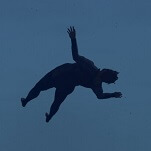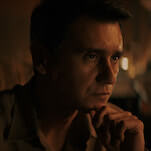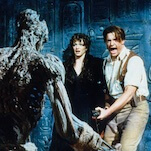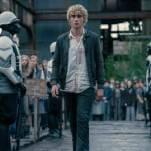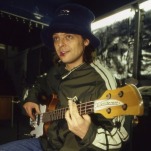Stan Brakhage’s films will always play best projected in a theater, where the flickering light, the hushed room, and the communal gathering enhance Brakhage’s explosive, rhythmic displays of color and shock. But The Criterion Collection’s 2003 anthology By Brakhage did about as well by the avant-garde pioneer as any home-video release could, presenting a strong selection of material—from the historically significant to the personal—in clean transfers, supported by informative liner notes and interviews with Brakhage. Criterion has now released a second volume of By Brakhage on DVD, and combined both volumes into one three-disc, 12-hour Blu-ray package. As with the original set, the expanded By Brakhage establishes a new standard for how to anthologize experimental film for those who don’t live near repertory houses. [Note: We originally reviewed Volume One in 2003.]
The biggest change in By Brakhage: An Anthology, Volume Two is that its 30 films have been grouped into six programs of roughly 90 minutes each, sequenced roughly chronologically, but with the themes and techniques of Brakhage’s different periods in mind. Program One, for example, comes from an era when Brakhage worked through issues of mortality and memory, in films that superimposed and edited together recognizable images. The program is bracketed by 1955’s poignant short “The Wonder Ring” (a rush of light, reflection, and movement serving as a study of an about-to-be-discontinued New York train route) and 1967’s hourlong anti-war tone-poem “23rd Psalm Branch,” which combines combat footage, pastoral scenes, and scratched negatives to explore what critic Fred Camper refers to in his notes as “the roots of violence in [Brakhage], and in the human nervous system.” Program Two offers highly abstracted home-movie footage meant to explore subjectivity; in Program Three, Brakhage works with children, animals, and the artificiality of cinematic representation. And so on.
In some ways, Brakhage’s films are among the most accessible of those produced by his generation of experimental filmmakers, in that he released a large, varied body of work with a clarity of purpose and an emphasis on visual beauty that even a complete newcomer to the form can appreciate. Of course, “accessible” is a relative term when it comes to squiggly blobs of moving paint, or a half-hour silent film consisting primarily of quick-cut, blurry impressions of the Pacific Ocean. Some amount of preparation will always be required before viewers can dive into By Brakhage. But it’s no chore to soak up the lovingly photographed, layered landscapes of the one-hour, four-part “Visions In Meditation,” or the rough thumbnail scratches of the posthumously completed fragment “Chinese Series.” Throughout his career, Brakhage sought to fuse film, poetry, fine art, and journaling. And he left behind work so groundbreaking and heartfelt that just about anyone with eyes can see its worth.
Key features: Hours of interviews with the late Brakhage, footage of the man at work, and Camper’s always-helpful program notes.



